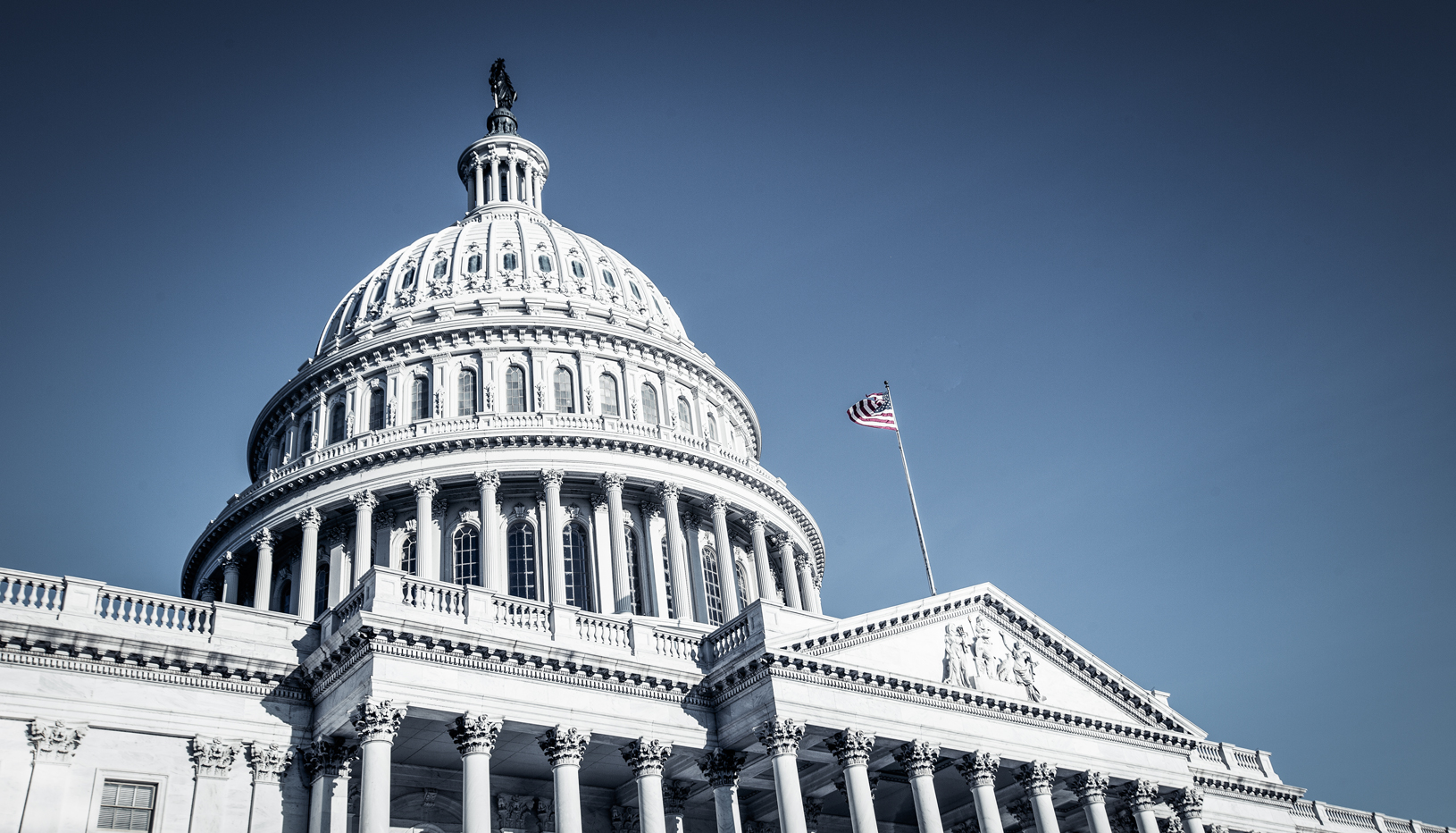The Covid-19 pandemic, the biggest public health crisis in more than a century, has underscored the critical role that science plays in government efforts to protect the health and well-being of people across the United States. Research and data — about the pandemic’s severity, appropriate mitigation measures, and long-term solutions to the crisis, such as vaccination campaigns — became central to daily life in a way that many people in this country had never before experienced. Government decisions based on rapidly developing science were, in many instances, a matter of life and death.
Throughout the pandemic, most attention focused on the federal government, from political officials’ early failure to acknowledge the magnitude of the danger to the success of Operation Warp Speed, the federally funded effort to create a vaccine. But state and local governments were the main day-to-day decision-makers. While federal agencies conducted research, collected data, allocated vital resources, and educated the public, state and local officials decided whether to impose mask mandates, close (and later reopen) schools and businesses, set up testing sites, and eventually promote (or discourage) vaccination.
Most state and local officials worked tirelessly — often at risk to their own health and lives — to protect the public. But as was true at the federal level, footnote1_fxfn1tj 1 Martha Kinsella et al., Trump Administration Abuses Thwart US Pandemic Response, Brennan Center for Justice, last updated July 26, 2021, https://www.brennancenter.org/our-work/research-reports/trump-administration-abuses-thwart-us-pandemic-response. senior state and local officials repeatedly failed to live up to the trust the public placed in them. Across the country, state and local leaders meddled in research and data and retaliated against experts in order to improve their political standing and cover up mismanagement.
The politicization of public health during the pandemic caused severe attrition among state and local government personnel. footnote2_igbc2ds 2 Anna Maria Barry-Jester et al., “Pandemic Backlash Jeopardizes Public Health Powers, Leaders,” KFF Health News, December 15, 2020, https://khn.org/news/article/pandemic-backlash-jeopardizes-public-health-powers-leaders/. At the end of 2020, an investigation by Kaiser Health News and the Associated Press showed that “181 state and local public health leaders in 38 states ha[d] resigned, retired or been fired” since the start of the Covid-19 pandemic, due largely to “political blowback” and harassment related to pandemic public health measures. footnote3_m97loo0 3 At least some of the harassment came from members of the public. Barry-Jester et al., “Pandemic Backlash.” By the end of 2020, “one in 8 Americans — 40 million people — live[d] in a community that ha[d] lost its public health department leader during the pandemic.” footnote4_n7ikzrs 4 Barry-Jester et al., “Pandemic Backlash.” A 2022 survey of nearly 45,000 state and local public health workers showed that about one-quarter of them were considering leaving their agency within the year. Of those intending to leave, nearly 40 percent said the pandemic had impacted their decision, and nearly 40 percent cited organizational climate and culture as the reason for their planned departure. footnote5_oecgdqo 5 De Beaumont Foundation, “The Impact of the Covid-19 Pandemic: Rising Stress and Burnout in Public Health, Results of a National Survey of the Public Health Workforce,” Public Health Workforce Interests and Needs Survey, 2022, https://debeaumont.org/wp-content/uploads/dlm_uploads/2022/03/Stress-and-Burnout-Brief_final.pdf.
Threats to science-based policymaking are not new. Rather, the pandemic brought to the fore long-standing problems. A National Academy of Sciences study published in 1988 — at the height of the AIDS epidemic, the last crisis to significantly test the American public health system — highlighted “tension between professional expertise and politics” at all levels of the American public health system. footnote6_o5qro0m 6 Institute of Medicine (US) Committee for the Study of the Future of Public Health, The Future of Public Health (Washington, DC: National Academies Press, 1988), 4. This tension has persisted, not only throughout the public health system but also in other state and local agencies with science-based missions. While officials often have legal authority to weigh numerous factors alongside scientific evidence when crafting policy, falsifying science in order to obfuscate the consequences of their policy decisions is an abuse of power. Yet senior state and local officials routinely reject scientific advice and facts that would lend support to policies they oppose or cast doubt on their leadership. In some cases, they have financial as well as political conflicts of interest. Even more troubling, they seldom face consequences.
While the tendency of senior government leaders to distort scientific research and data for political gain is well documented at the federal level, this first-of-its-kind report reveals three broad trends in abuse at state and local agencies:
- Suppression and distortion of politically inconvenient research and data. Senior officials have often suppressed data and research reports or even altered scientific conclusions and misrepresented data that are typically made publicly available, to create a false evidentiary basis for their preferred policy outcomes.
- Intimidation and censorship of experts. State and local agencies rely on subject matter experts to collect and analyze data and perform and interpret research to inform the policymaking process. But in many instances, officials have censored experts’ work and intimidated them, sometimes to the point of forcing them out of government service.
- Sidelining or even fabrication of science in agency decision-making. State and local policymakers have often ignored or even fabricated scientific research and data they are charged with using to take action to protect public health and the environment.
These abuses have dire real-world consequences for people’s health and safety. But the burdens are not distributed equally. When officials misrepresent the scientific basis for policies, the adverse consequences typically fall disproportionately on communities of color and other underserved groups, exacerbating injustices caused by centuries of discriminatory policies with respect to, among other things, housing, working conditions, education, health care, community investment, and intergenerational wealth-building. footnote7_t0r5rz5 7 See Anita Desikan et al., “An Equity and Environmental Justice Assessment of Anti-Science Actions During the Trump Administration,” Journal of Public Health Policy 44 (2023): 148, https://doi.org/10.1057/s41271–022–00390–6 (“Members of underserved communities face disproportionately high exposure to pollution and other stressors. Residents of underserved communities are exposed to greater health hazards in their homes, workplaces, and neighborhoods than are residents from whiter and more affluent communities. The hazards relate to long-standing inequities and systemic racism, such as residential segregation due to ‘redlining’ practices in which governments marked up neighborhoods on maps and gave lower grades in red to places where they expected property values to decrease, often in areas with Black homeowners. Underserved communities are more likely to be located near sources of environmental hazards such as sewage systems, mines, landfills, industrial facilities, major roads, and fossil fuel extraction operations.”).
Just as episodes of political interference in science at federal agencies have demonstrated the need for stronger safeguards for science in the policymaking process at the federal level, abuses at the state and local levels underscore the need for stronger safeguards in state and local governments. And while there are numerous examples of abuse cataloged in this report, the dearth of safeguards at state and local agencies has likely led to underreporting of misconduct. According to a scientist who used to work at a state environmental agency, “I have heard the same story time and time again — investigators are pressured to ignore problems and not document violations.” footnote8_cc8j19l 8 Interview with Neil Carman, clean air director for the Sierra Club’s Texas chapter, March 15, 2023. As a Texas Air Control Board investigator, Carman faced retaliation after filing a complaint against a polluter in 1989. The Texas Attorney General’s Office of Environmental Protection subsequently pursued a successful record-breaking air pollution suit against the polluter. United Press International, “Dynagen Rubber Plant Agrees to $1.4 Million Fine for Pollution,” September 4, 1991, https://www.upi.com/Archives/1991/09/04/Dynagen-rubber-plant-agrees-to-14-million-fine-for-pollution/8309683956800/. Another former state government scientist agrees: “People see retaliation happening, and it discourages them from trying to do the right thing. You just learn to roll with the punches.” footnote9_1rbsz4u 9 Interview with former state agency investigator, March 13, 2023.
State safeguards are, in general, weaker than those at the federal level. footnote10_lgjh7jc 10 While the federal government has adopted a number of safeguards within the past 15 years, they are still in need of strengthening. See Preet Bharara et al., Proposals for Reform, Volume II, National Task Force on Rule of Law & Democracy, 2019, https://www.brennancenter.org/our-work/policy-solutions/proposalsreform-volume-ii-national-task-force-rule-law-democracy. For instance, only two state agencies in the entire country have publicly available policies to safeguard science in the policymaking process, often referred to as “scientific integrity policies” (see figure 1). footnote11_7uxb74y 11 Climate Science Legal Defense Fund, A Quick Guide to the Scientific Integrity Policies of Universities, State Agencies, and International Institutions, 2020, https://www.csldf.org/wp-content/uploads/2020/05/Scientific-Integrity-at-Universities-State-Agencies-and-International-Institutions.pdf. Only 22 states have statutes that require state agencies to use the “best available science” in decision-making (see figure 2). footnote12_hmyazby 12 See table 1. Twelve states’ whistleblower laws do not offer state employees protection for disclosure of dangers to health, public safety, or the environment. And 41 states do not protect employees who disclose violations of ethics rules. footnote13_6ym9mzi 13 Public Employees for Environmental Responsibility (hereinafter PEER), “Whistleblower Report Cards by State,” accessed June 15, 2023, https://peer.org/resource-center/state-whistleblower-reportcards/.
Practical reforms are needed to safeguard the research and data produced and used at state and local agencies from politically motivated abuse. States and localities should
- adopt scientific integrity policies;
- require public access to publicly funded research and data;
- require that agencies rely on the best available science and consider equity for underserved communities in the policymaking process;
- ensure professionalism, diversity, and ethical standards for science advisory committees;
- strengthen conflict of interest policies and ethics laws to prevent meddling in science for financial gain;
- ensure whistleblower protections for disclosures of alleged abuse;
- establish protections for experts against politically motivated retaliation at state agencies; and
- create executive branch watchdogs to investigate and remedy abuses.
Almost all these reforms have demonstrated their utility in the federal government and many state agencies already. Many can be implemented by state and local legislative bodies as well as by governors and agency leaders. The federal government too can raise state and local standards in many cases.
Contemporary public health and environmental emergencies such as the Covid-19 pandemic and recent climate change–related catastrophes are shining a light on a long-standing problem endemic to state and local agencies with science-based missions. Now is the time for agency leaders, governors, state and local lawmakers, and the federal government to raise standards and recommit to the promise of science-based policymaking as the means to tackle the country’s most complex problems. The American public’s health, well-being, and trust in government are at stake.
End Notes
-
footnote1_fxfn1tj
1
Martha Kinsella et al., Trump Administration Abuses Thwart US Pandemic Response, Brennan Center for Justice, last updated July 26, 2021, https://www.brennancenter.org/our-work/research-reports/trump-administration-abuses-thwart-us-pandemic-response. -
footnote2_igbc2ds
2
Anna Maria Barry-Jester et al., “Pandemic Backlash Jeopardizes Public Health Powers, Leaders,” KFF Health News, December 15, 2020, https://khn.org/news/article/pandemic-backlash-jeopardizes-public-health-powers-leaders/. -
footnote3_m97loo0
3
At least some of the harassment came from members of the public. Barry-Jester et al., “Pandemic Backlash.” -
footnote4_n7ikzrs
4
Barry-Jester et al., “Pandemic Backlash.” -
footnote5_oecgdqo
5
De Beaumont Foundation, “The Impact of the Covid-19 Pandemic: Rising Stress and Burnout in Public Health, Results of a National Survey of the Public Health Workforce,” Public Health Workforce Interests and Needs Survey, 2022, https://debeaumont.org/wp-content/uploads/dlm_uploads/2022/03/Stress-and-Burnout-Brief_final.pdf. -
footnote6_o5qro0m
6
Institute of Medicine (US) Committee for the Study of the Future of Public Health, The Future of Public Health (Washington, DC: National Academies Press, 1988), 4. -
footnote7_t0r5rz5
7
See Anita Desikan et al., “An Equity and Environmental Justice Assessment of Anti-Science Actions During the Trump Administration,” Journal of Public Health Policy 44 (2023): 148, https://doi.org/10.1057/s41271–022–00390–6 (“Members of underserved communities face disproportionately high exposure to pollution and other stressors. Residents of underserved communities are exposed to greater health hazards in their homes, workplaces, and neighborhoods than are residents from whiter and more affluent communities. The hazards relate to long-standing inequities and systemic racism, such as residential segregation due to ‘redlining’ practices in which governments marked up neighborhoods on maps and gave lower grades in red to places where they expected property values to decrease, often in areas with Black homeowners. Underserved communities are more likely to be located near sources of environmental hazards such as sewage systems, mines, landfills, industrial facilities, major roads, and fossil fuel extraction operations.”). -
footnote8_cc8j19l
8
Interview with Neil Carman, clean air director for the Sierra Club’s Texas chapter, March 15, 2023. As a Texas Air Control Board investigator, Carman faced retaliation after filing a complaint against a polluter in 1989. The Texas Attorney General’s Office of Environmental Protection subsequently pursued a successful record-breaking air pollution suit against the polluter. United Press International, “Dynagen Rubber Plant Agrees to $1.4 Million Fine for Pollution,” September 4, 1991, https://www.upi.com/Archives/1991/09/04/Dynagen-rubber-plant-agrees-to-14-million-fine-for-pollution/8309683956800/. -
footnote9_1rbsz4u
9
Interview with former state agency investigator, March 13, 2023. -
footnote10_lgjh7jc
10
While the federal government has adopted a number of safeguards within the past 15 years, they are still in need of strengthening. See Preet Bharara et al., Proposals for Reform, Volume II, National Task Force on Rule of Law & Democracy, 2019, https://www.brennancenter.org/our-work/policy-solutions/proposalsreform-volume-ii-national-task-force-rule-law-democracy. -
footnote11_7uxb74y
11
-
footnote12_hmyazby
12
See table 1. -
footnote13_6ym9mzi
13
Public Employees for Environmental Responsibility (hereinafter PEER), “Whistleblower Report Cards by State,” accessed June 15, 2023, https://peer.org/resource-center/state-whistleblower-reportcards/.









